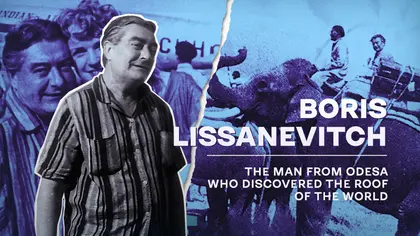BORIS NIKOLAYEVICH LISSANEVITCH was a ballet dancer at fi rst, but also a politician and businessman; an advisor to King Tribhuvan, the became creator of the tour to the Roof of the World (Nepal) and the “best friend of climbers”. This native of Ukraine was recognized as “a unique symbol of modern Nepal”.
FROM DANCER TO ADVENTURER
Odysseus himself would have been envious of the well-traveled life of Boris, who was born in Odesa. The difference between them is that Lissanevitch was dragged through the world not by Zeus and the god of the North Wind and the waves of the Mediterranean Sea, but by the Russian Revolution by the expanses of Eurasia. His life story was populated with natives of foreign lands, the masters of cloak and dagger, political intrigues, secret meetingsand, and world fame. 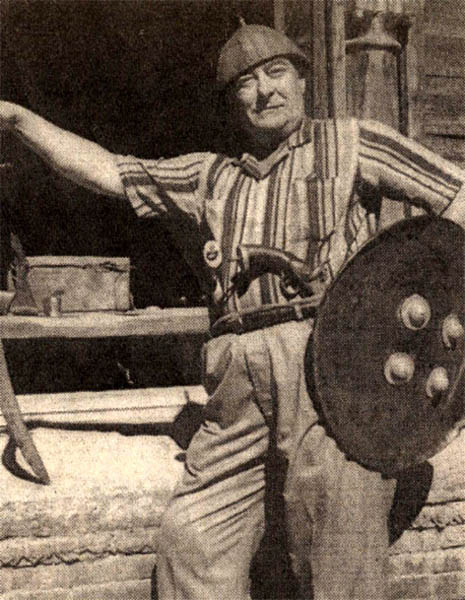
Boris Lisanevich. He has been called the second landmark of Nepal
The 19-year-old Odesa Opera and Ballet Theatre dancer left the Bolshevik Odesa in 1924 and emigrated to France. For five years, he performed at the Paris “Alhambra”, at the Ballet Russes, in the legendary troupe of Sergei Diaghilev. After Sergei’s death, Master Boris went on tour to the East. It was there where his adventurous head got sucked into a dance which did not consist of ballet pirouettes. A series of savvy “dance steps,” Boris managed to found an elite AngloHindu Club “300” in Calcutta (an Indian city that recently changed its name to Kolkata), where the most influential representatives of the establishment were invited. Visitors would not only head to the club for recreation, but also to solve the most serious problems face-toface, including the plan of starting a revolution in Nepal.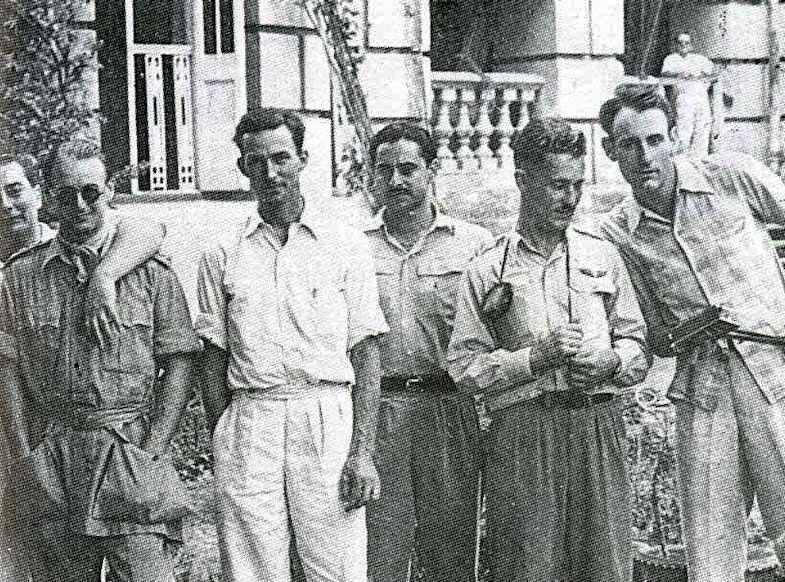
In the garden of the 300 Club. Boris is on the far left, behind the man with glasses. Photo from Michel Pessel's book Tiger for Breakfast: The Story of Boris of Kathmandu", New York: E.P. Dutton & Co., Inc. 1966
THE SECOND AFTER EVEREST
In the early 1950s Boris Lissanevitch got stuck in Nepal (a country that was sealed off from the rest of civilization) for the rest of his View of the rooftops of Kathmandu, the capital of the Roof of the World. Agatha Christie called Boris Lissanevitch “the most outstanding adventurer of the 20th century.” Nepal is rightly called the “roof of the world”. life, pondering the idea of turning the Roof of the World into a tourist Mecca. In one of the royal palaces, Rana Lissanevitch arranged the first “Hotel Royal” in the Himalayas and obtained the King’s permission to have debut groups of travelers for visiting. 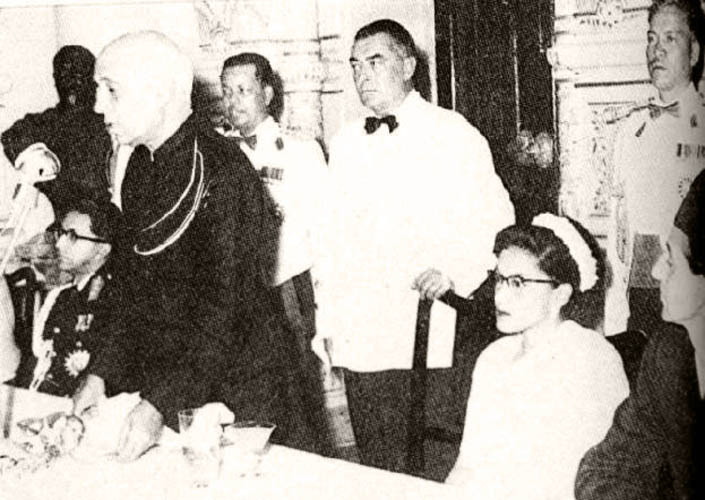
Prime Minister of India Jawaharlal Nehru, Boris Lysanevych and the Queen of Ratna
Subsequently, the monarch, who was impressed by the tourist profits, ordered that visas be issued to anyone who came to Kathmandu. In less than a decade, Nepal had become a tourist mecca, and has also turned into the mountaineering capital of the world. Lissanevitch was recognized as one of the “unique symbols of Nepal”, listed second right after Everest (according to the “Life” magazine).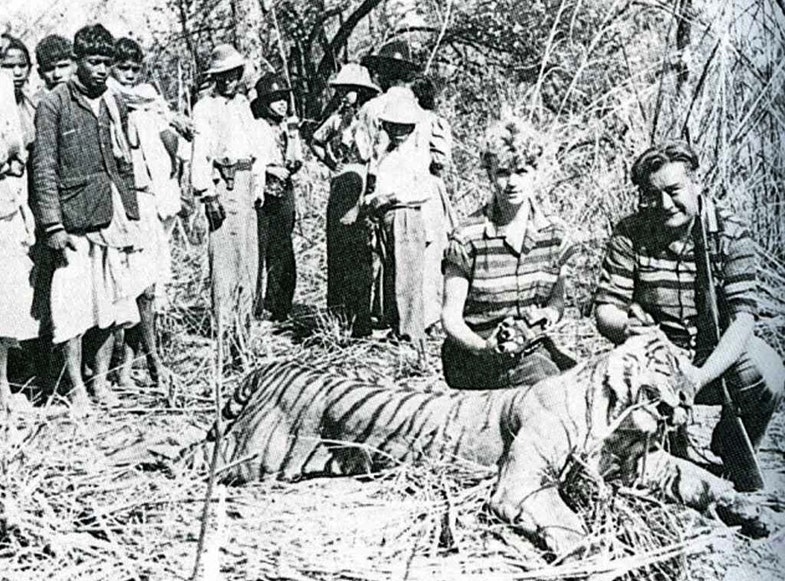
Boris and his wife Inger hunting in Nepal. Photo from Michel Pessel's book "Tiger for Breakfast: The Story of Boris from Kathmandu", New York: E.P. Dutton & Co., Inc. 1966
THE PROTOTYPE OF THE PROTAGONIST IN A NOVEL BY AGATHA CHRISTIE
Most of those who visited the Roof of the World were wealthy and famous people. Agatha Christie was one of them. After her second marriage to Max Mallovan, the writer was smitten by one more passion: traveling. Since her beloved was an archeologist that specialized in the countries of the East, she also became a passenger of the Eastern Express for many years, travelling to Iran, Syria, Turkey, and Nepal. Having reached the Roof of the World, Christie could not avoid the warm embrace of Boris Lissanevitch, because his Royal Hotel and Bar “Yak and Yeti” were the most popular places here. Over the years, the bar became a restaurant and acquired the status of a symbol of Nepal. By the way, even today you may see the Chicken a la Kyiv on the menu.
According to eyewitnesses, Boris repeatedly accompanied Agatha, showing to her the most prominent monuments of Kathmandu, the capital of Nepal. In particular, the exotic wildlife within the city outskirts. Having become friends with our protagonist and learning about his personal history, the Queen of Detectives named him “the most outstanding adventurer of the 20th century.” The writer Viktor Klenov stated that it was Boris who gave the British writer a series of stories for her novels. And became the prototype of Charles Hayward in her famous novel, “Crooked House.” 
Indira Gandhi, Boris Lisanevich, King Mahendra and Queen Ratka
INTERESTING FACTS:
- As a dancer, Lissanevitch performed in the ballets “Prince Igor”, “The ThreeCornered Hat”, “Petrushka”, “Carnaval”, “The Firebird”, and “Parade”.
- He first arrived in Nepal in 1951 as a guest at the wedding of the monarch’s son. He flew in on the king’s private aircraft.
- Boris was a participant of the 1950/51 coup in Nepal. He took the side of the representative of the Shah dynasty.
- Boris Lissanevitch’s friends were the King of Spain Juan Carlos, the writers Agatha Christie and Françoise Sagan, the actors Ingrid Bergman and Jean-Paul Belmondo, the choreographers Ninette de Valois and Serge Lifar, the artist and sculptor Henri Matisse, and the composer Igor Stravinsky.
- In one photo, Boris (at that time an advisor to the king) poses alongside Jawaharlal Nehru, Indira Gandhi and Nepal’s royal couple.
- Lissanevitch, who hunted 69 tigers, said later: “I regret the last 68 a lot.”
- In his hunting arsenal this businessman from Odesa had a rifle he called Alka Seltzer, which fired bullets with a sedative and was intended to hunt the snowman – a yeti.
- Feature films starring Boris Lissanevitch include Up to His Ears” (1965), “The Man from Hong Kong” (1975).
- Documentary films about him are: “Himalaya” (1999), “Boris Lissanevitch: The Best Friend of Kings” (2007).
- Books about Boris Lissanevitch are: “Tiger for Breakfast” (Michel Peissel, France), “My Kind of Kathmandu” (Desmond Doig, UK), “The Mountain Is Young” (Han Suyin, China).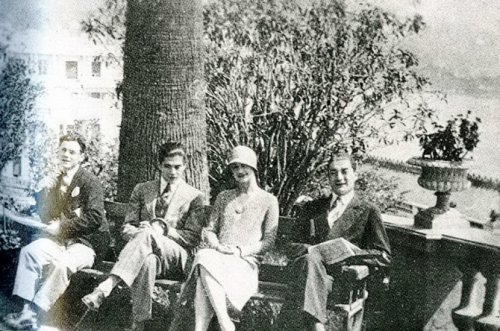
Boris Lisanevych and Serge Lifar.
FROM THE DOSSIER OF BORIS LISSANEVITCH
• Lissanevitch was born on October 4, 1905 in Odesa.
• He studied at Odesa Cadet Academy (1914-1917) and the Ballet school (1920-1921).
• He was the ballet dancer of the Odesa Opera and Ballet Theatre (1922-1924), the Paris Theater “Alhambra”, the Ballet Russes, an employee of the French automobile factory “Reno”, a dancer of the Centre of Diaghilev (1925- 1929), the troupe of Chaliapin (1929-1932), and performed on stages in various troupes in India, China, Java, Burma, Ceylon. Had a chain of restaurants and a hotel in Nepal but went bankrupt at the end of his life.
• He died on October 20, 1985 in Kathmandu. He is buried in the cemetery of the British Embassy. The tombstone is adorned with the noble coat of arms.
• A bust of Boris Lissanevitch was installed in the capital of Nepal. 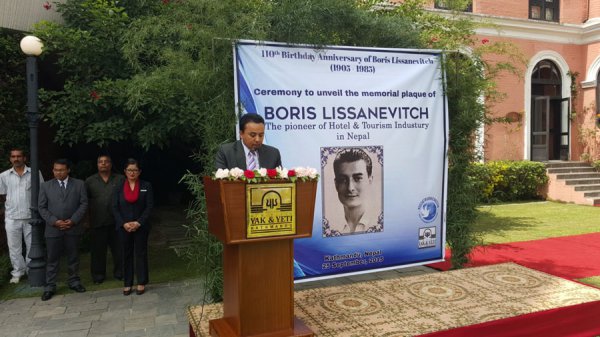
A TIP ON THE TOPIC: “Once a year, go someplace you’ve never been before.” - Nepalese wisdom.
This article by Nadiia Avramchuk and Mykola Sukhomozsky is reprinted with the publisher's permission from the book (UN)Celebrated Ukrainians Who Changed the Course of History, SAMIT-KNYHA, Kyiv, 2020.
JOIN US ON TELEGRAM
Follow our coverage of the war on the @Kyivpost_official.
You can also highlight the text and press Ctrl + Enter


